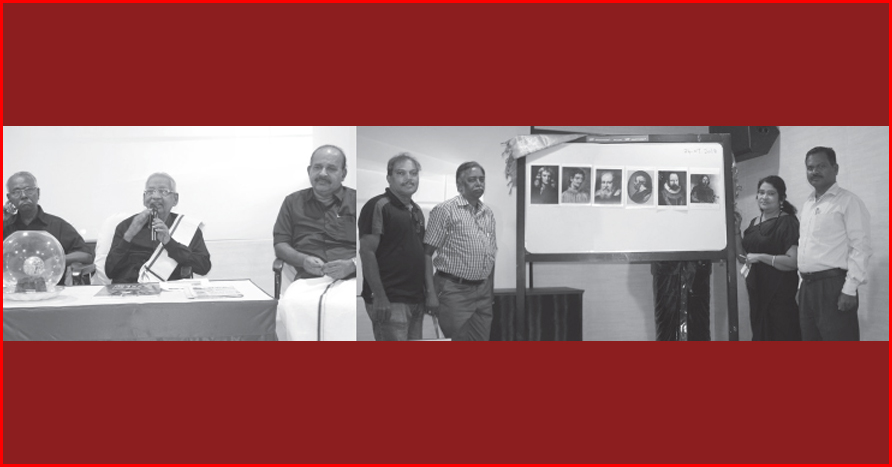
Matthew C. Nisbet
Professor of Communication, Northeastern University, USA
“Genetic Code of Human Life Cracked by Scientists” was the June 27, 2000, front-page headline of The New York Times. The previous day, in an event held at the White House, President Colins, director of the National Human Genome Project, and Craig Venter, president of Celera Genomics, to announce that the public-private consortium had successfully mapped roughly 90 per cent of the human genome. “Today, we are learning the language in which God created life,” declared President Clinton, flanked by the two scientists. ‘With this profound new knowledge, humankind is on the verge of gaining immense, new power to heal”.
Even though full completion of the genome map was still several years away, in a 1999 article in the New England Journal of Medicine, Collins (1999) sketched out his vision for the health benefits, presenting a hypothetical scenario a decade in the future. He described a twenty-three-year-old male patient who, after meeting with his doctor, consented to a genetic test. Based on the results, the patient was told that he had an increased risk of contracting coronary artery disease, colon cancer, and lung cancer.
The test results, in Collins’s telling, were used to prescribe an individually tailored prophylactic drug regimen to reduce the patient’s cholesterol level and heart disease risk to normal levels. But most important, “Confronted with the reality of his own genetic data, (the patient) arrives at that crucial ‘teachable moment’ when a lifelong change in health-related behavior, focused on reducing specific risks, is possible,” wrote Collins. In this scenario, the patient planned to begin annual colonoscopies at age forty-five and join a support group of other individuals at high risk of lung cancer, in a determined effort to quit smoking.
Taking their cue from government and the private sector, journalists during the 2000s portrayed genetic research in sensationalistic terms telling readers that the genetics “revolution” was happening right now. Headlines and cover stories proclaimed a gene for a myriad of human traits or behaviors such as the “fat gene,” “laziness gene,” and the “God gene.” Other hyperbolic stories sold readers on the belief that genes were fate with headlines such as “Marriage Problems: It May Be in Your Genes,” “Always Lost? It May Be in Your Genes,” and “Party Animal? It May Be in Your Genes.”
Such narratives falsely promoted the idea that genes determine health, attractiveness, personality, happiness, success, and personal failings. In doing so, the trajectory of life is framed strongly in terms of an individual’s genetic destiny, downplaying the relevance of a complicated mix of social and behavioral factors.
By 2012, the cost of sequencing an entire individual’s human genome had gone from several billion to a thousand dollars. Even cheaper and faster were new services offered by direct-to-consumer genetic testing companies. Instead of sequencing an individual’s entire genome, these companies offer consumers the opportunity to search for genetic markers of traits and diseases.
Today there are an estimated 246 companies in the United States offering direct-to-consumer genetic tests. These companies market services that provide allegedly reliable information about disease risk, ancestry, athletic ability, child talent, nutrition, and even personalized beauty creams, compositional music, romantic partners, and wine varieties. Any consumer with approximately $200 to spend can purchase a genetic test online, receive the test by mail, personally collect and mail back the DNA sample, and access the results online. Even dogs can be genetically tested for their “wellness needs”
The growing popularity of personal genetic testing, warns bioethicist Timothy Caulfield in his 2021 book The Cure for Everything, is a consequence of a deeply problematic “cycle of hype” in science that has intensified over the past three decades. In the quest for prestige, funding, and profit, researchers and their institutions too often have sacrificed complexity, uncertainty, and truth.
Caulfield, who spoke at CSIC on 2018, argues that this cycle stems from the immense pressure on universities and government agencies to demonstrate societal benefits and commercial value for their publicly funded research. This pressure results in over-promising in grant proposals and over-selling in research articles and news releases. Such messages are picked up by journalists, some of whom further twist them to add drama, gain attention, and spread across social media. Private companies amplify the hype, employing narratives often originating with researchers and the news media as further grist for their marketing mill.
What this adds up to, Caulfield tells viewers in a recent episode of his Netflix series A Users Guide to Cheating Death, is that “our perception of genetics is light-years ahead of what is currently achievable.” Genetic testing feeds on a consumer economy that is increasingly tailored toward making every experience or product deeply personalized. But Caulfield warns viewers that we should be deeply skeptical of claims that “we can use genetic information to tailor these really complex human traits that have lots of genes involved, experiences, memories” that combine in unknowable ways to influence our lives.
Dubious Promises
Among all the genetic testing applications, it is detection of disease risks that Caulfield and other experts warn is the most problematic. More than 130 companies currently offer health risk-related genetic testing. But such tests are of dubious value. Researchers have yet to uncover genes that provide highly predictive information about the probability of common diseases such as heart disease, diabetes, and most cancers. These diseases have complicated, multiple genetic links that interact strongly with personal environment, lifestyle, and behavior. The exceptions are a handful of rare diseases that are directly caused by a specific, single-gene mutation such as Huntington’s disease or cystic fibrosis. In this category, the best-known genetic testing “success” story is the identification of the BRCA 1 and BRCA 2 mutations, which are present in less than 1 per cent of the population and can dramatically increase the chances in some individuals of breast and ovarian cancer.
Despite the uncertainties specific to common diseases, genetic testing companies heavily promote their ability to provide information about our health future. When Caulfield, for example, tested his DNA, the results he received indicated that he had a 0.4 per cent chance of developing celiac disease compared to the 0.1 per cent population risk. He also had a 0.5 per cent chance of developing multiple sclerosis 9MS) compared to the 0.3 per cent population risk, according to the risks presented by driving , sun exposure, smoking, drinking, or obesity, Caulfield’s 0.2 per cent greater risk of developing MS was “essentially lost in the wash of risks associated with life,” he noted.
The need to place genetic test results in context is a second major problem with direct-to-consumer services. Few individuals have the expert knowledge to reach the type of interpretations presented by Caulfield. If ordered by a doctor or genetic counselor by way of a local hospital or lab, a patient would be able to review the results with a qualified professional who can provide guidance on how to interpret and manage the risks – if management was needed at all.
But when an individual orders a genetic test from a company and receives the results online, they are left to rely on their own knowledge to interpret, cope with, and act on the results. As a consequence, an individual may develop a misguided, fatalistic attitude. They may become depressed, holding a false certainty that they are likely to develop a serious disease, a belief that can affect every other part of their life. Or if they erroneously believe they are bound to develop heart disease or obesity, the patient may reason they might as we live it up and eat anything they want, stop exercising, and so on. The lack of available professional guidance and counseling is all the more serious when prospective parents obtain direct-to-consumer tests evaluating the risks of any future children being affected by a serious illness or disability.
In any genetic test, privacy and informed consent are also a major concern, especially in light of recent revelations about illicit sharing of data among major social media companies. Similar to joining a social media platform such as Facebook, most genetic testing companies offer consumers a lengthy, online “clickwrap” contract that is easily skimmed, if read at all, calling into question whether adequate informed consent is obtained from consumers or if they are even aware of how their personal genetic information is being stored, shared, and used. These questions deeply matter because the business model of most genetic testing companies is premised on a Silicon Valley-inspired model considering human genetic information “digital big data to be browsed, uploaded and shared by consumers and companies online,” write sociologists Stuart Hogarth and Paula Saukko (2017).
Finally, the main pitch made by genetic companies –that if an individual is aware of their genetic risk for disease, they will take action by adopting a healthier lifestyle is a false one. As Caulfield (2012) details, patients rarely change their lifestyle based on adverse weight, cholesterol, or glucose levels, measures that in most cases are far better predictors of related disease outcomes than current genetic tests can provide. Even when patients suffer a heart attack or undergo bypass surgery or angioplasty, only about a third of patients follow doctors’ recommendations by continuing with an exercise regimen a year after the event.
Perhaps not surprisingly, a meta-analysis overseen by the esteemed Cochrane Review Group of available studies on the effects of genetic risk information warns:
Expectations that communicating DNA based risk estimates changes behaviour is not supported by existing evidence. These results do not support use of genetic testing or the search for risk-conferring gene variants for common complex diseases on the basis that they motivate risk-reducing behavior.
Many of the companies that offer disease risk information also sell testing specific to ancestry, an option that is gaining in popularity. When a person receives unexpected information about their ancestry, writes Phillips (2016), it can often have profound effects on conceptions of self-identity in ways that twist and confuse differences between race, culture, and myriad other factors. Tests specific to Native American or African American ancestry are also increasingly popular. But genetic resting companies rely on databases constructed by past consumers of their services, making the pool of genetic information by which to offer scientifically valid results related to racial minority groups questionable. For example, among past consumers on file at one of the largest private databases, less than 1 per cent had identified as Native American and less than 3 percent as African American.
Writes Caulfield in The Cure for Everything:
Where is this (genetic) revolution happening? Not in the world in which I live in. The so-called genetic revolution is more of an uncertain and slow evolution. There are vast amounts of genetic information at our disposal, and incomprehensibly sophisticated technologies that allow the speedy production of more and more of it, but scientists and researchers still appear to be nibbling indecisively around the edges of all that data, unsure what to do with it.
Courtesy : Skeptical Inquirer, Vol: 43, No. 4







